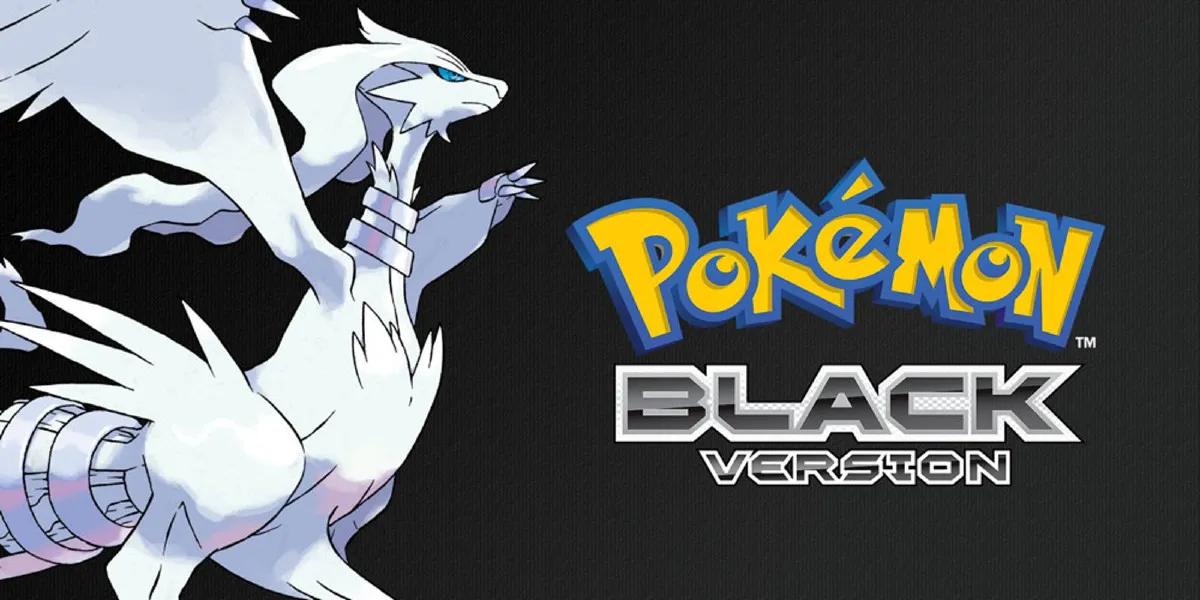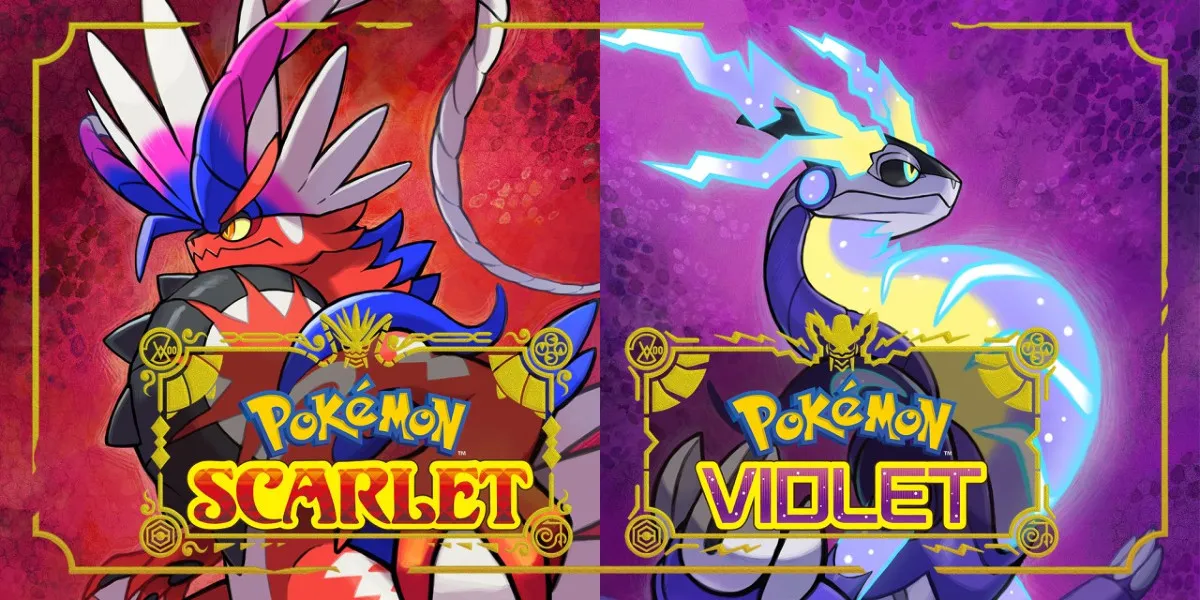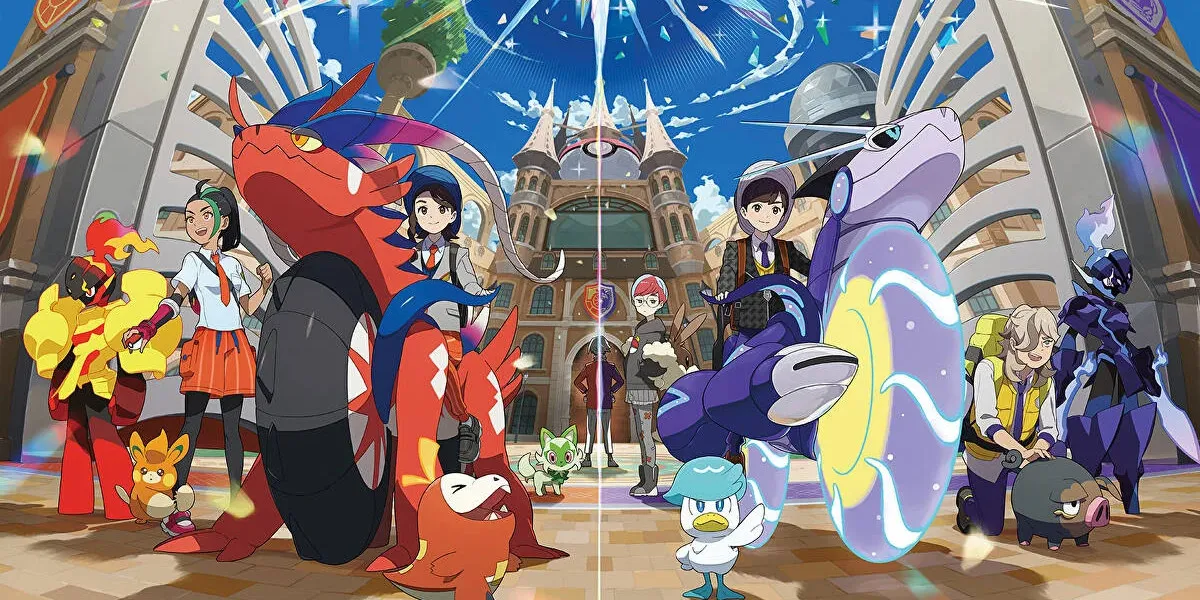It’s hard to believe that the first official mainline Pokémon game debuted back in 1996, unleashing the original iconic 151 Pokémon species on the world. Now, 27 years later, there are nine generations of mainline Pokémon games to enjoy, and over 1,000 Pokémon buddies to catch and train. If you’re only just embarking on your Pokémon journey, or you’d like to bask in a bit of nostalgia, join us as we take a look back at all the mainline Pokémon games that we have been blessed with so far, in chronological release order.
Related: Top 10 Rarest Shiny Pokemon in Pokemon GO on Prima Games
Generation I: Pokémon Red, Blue, Green, and Yellow (1996-2000)

Originally released in 1996 in Japan, and with a wider release in 1998, Pokémon Red, Green (only released in Japan), and Blue—available exclusively for Nintendo’s Game Boy—introduced the world to the concepts of Pokémon battling, the Pokédex, Pokémon Gyms, and the Pokémon League, and we were never the same. Pokémon Yellow was the first “enhanced” version of its predecessors, giving trainers the chance to have Pikachu as their starter Pokémon (just like Ash Ketchum), and also included some in-game events inspired by the Pokémon anime, as players journeyed through the Kanto region.
Generation II: Pokémon Gold, Silver, and Crystal (1999-2003)

Pokémon Gold and Silver were created for the Game Boy Color, introduced 100 new species of Pokémon, and released in Japan in 1999, followed by other markets in 2000 or 2001. Introducing an entirely new Pokémon region—Johto—into the mix, it soon became clear that the Pokémon franchise would be unstoppable. Similar to Pokémon Yellow, Pokémon Crystal was released after Gold and Silver and featured an improved and expanded version of Generation II’s first two games. Interestingly, Pokémon Gold, Silver, and Crystal were the first to have the new region’s Legendary Pokémon feature on their packaging, a tradition that continues today.
Generation III: Pokémon Ruby, Sapphire, and Emerald (2002-2007)

Generation III was the first Pokémon generation developed for the Game Boy Advance line of handheld consoles, which included the later addition of the Game Boy Advance SP. Pokémon Ruby and Sapphire brought trainers over to Hoenn region—the first region disconnected from Kanto—and expanded the Pokédex with 135 new Pocket Monsters to discover and obtain. Emerald, like Crystal and Yellow before it, was an enhanced version of Pokémon Ruby and Sapphire, including new characters, content, locations, the chance to battle old foes, and more. Pokémon Ruby and Sapphire were each the best-selling Game Boy Advance games of all time.
Generation III also included, for the first time, remakes of older Pokémon games. These are considered mainline games in their own right: Pokémon LeafGreen was a remake of Generation I’s Pokémon Green game, and Pokémon FireRed was a remake of Gen I’s Pokémon Red game, featuring updates in line with the improved consoles.
Generation IV: Pokémon Diamond, Pearl, and Platinum (2006-2011)

Pokémon Diamond, Pearl, and Platinum were the first Pokémon games developed for the Nintendo DS console range and introduced the world to the Sinnoh region, the Pokémon world’s snowiest region yet. Pokémon Diamond and Pearl revealed 107 new Pokémon species and made use of the Nintendo DS’ Wi-Fi capabilities, allowing players to trade Pokémon worldwide for the first time through the Global Trade System.
Just like Generation III, Generation IV also featured core series remakes. Pokémon HeartGold was a remake of Generation II’s Pokémon Gold, and Pokémon SoulSilver was a remake of Pokémon Silver.
Generation V: Pokémon Black and White (2010-2013)

Pokémon Black and White traveled over to the Unova region, where trainers could encounter 156 new Pokémon in total. These fifth-generation games introduced the Seasons mechanic, affecting not only the aesthetics of the games but also which Pokémon could be found in the wild. Interestingly enough, Generation V deviated from tradition. Instead of releasing an enhanced version of its original games, or even remakes of old games, it instead released two genuine sequels: Black 2 and White 2, which take place two years after the events of Pokémon Black and White, respectively.
Generation VI: Pokémon X and Y (2013-2016)

Pokémon X and Y headed to France—sorry, Kalos—and introduced a mere 72 Pokémon to the Pokédex. Debuting on the Nintendo 3DS (or 2DS, whichever you might have preferred), Pokémon X and Y were the first Pokémon games to be presented fully in 3D. The base games for Generation VI also introduced a new Pokémon type and Eeveelution with Sylveon, a Fairy-type Pokémon.
Generation VI included two additional core game remakes, as the franchise returned to the Hoenn region. Pokémon Omega Ruby and Pokémon Alpha Sapphire boasted improved graphics and included Pokémon X and Y‘s newest battle gimmick, Mega Evolution, which allows certain Pokémon to evolve into an additional stronger form, sometimes even changing their typing—but only during a Pokémon battle.
Generation VII: Pokémon Sun and Moon (2016-2019)

Pokémon Sun and Moon changed the tried-and-true format of the Pokémon games for the first time. In the region of Alola—based on Hawaii—trainers undertook the Island Challenge instead of the Gym Challenge. This involved hopping across four Islands to complete a series of challenges and battle the Trial Captain, eventually leading to Alola’s first-ever Pokémon League. Sun and Moon also introduced a new battle gimmick with Z-moves: insanely powerful moves that can only be used once during a battle. Sun and Moon also included the first regional variants, giving a select few familiar Pokémon a makeover and a typing change. A total of 88 Pokémon were added to the Pokédex in Generation VII.
In addition to base games Sun and Moon, Generation VII also included Pokémon Ultra Sun and Ultra Moon, which were enhanced versions of the previous games, as well as new remakes of the Kanto games in Pokémon: Let’s Go, Pikachu! and Let’s Go, Eevee! The big difference here, however, was that the Let’s Go games could connect to Pokémon Go!, Niantic’s wildly successful mobile Pokémon game. These games not only introduced a few new game mechanics but were also the first official Pokémon games to debut on the Nintendo Switch. Sun and Moon were still produced for the 3DS.
Generation VIII: Pokémon Sword, Shield, and Arceus (2019-2022)

When Generation VIII came along, it was clear that Pokémon was trying to reinvent itself. Though Pokémon Sword and Shield reinstated the Gym Challenge, they were now being held in massive stadiums inspired by the U.K.’s football culture (Sword and Shield‘s Galar region was based on the U.K.), and they introduced a tournament format for the Pokémon League. Additionally, Sword and Shield included the Wild Area, an open-world section of the Galar map that allowed trainers to discover all sorts of new Pokémon in a fresh and exciting way.
In another first for the Pokémon franchise, Generation VIII featured neither an enhanced version of the previous game nor a remake. Instead, taking advantage of the capabilities of the Nintendo Switch, Generation VIII introduced a two-part DLC—”The Isle of Armor” and “The Crown Tundra.” All together, Gen VIII introduced 89 new Pokémon, as well as 13 regional variants of already existing Pokémon.
Additionally, Pokémon Legends: Arceus is considered a mainline game. This was something entirely new, as the Pokémon protagonist gets sent back in time to ancient Sinnoh—then known as Hisui, a region featuring an open-world concept and several new in-game mechanics.
Generation IX: Pokémon Scarlet and Violet (2022-Present)

This is what all the new changes had been leading to. Pokémon Scarlet and Violet are Pokémon’s first ever fully open-world games, providing trainers with not only the Gym Challenge but also two additional storylines. The Paldea region is filled with exciting new Pokémon—114, to be exact—and plenty of gorgeous towns and landscapes. The game on the whole is quite an achievement, and the DLC has only enhanced the experience.
The Hidden Treasure of Area Zero is available now and features two parts: “The Teal Mask” and the “Indigo Disk.” “The Teal Mask” sees trainers join a school excursion to the land of Kitakami, a remote region featuring over 200 Pokémon previously missing from the Paldean Pokédex, as well as a few entirely new faces and a compelling mystery. Trainers are tasked with unraveling the myth of Ogerpon, a shy Pokémon that lives in the mountains and wears a few mysterious but powerful masks.
“The Indigo Disk” has the Pokémon trainer become an exchange student at the Blueberry Academy, a prestigious school that specializes in double battles. The school features its own version of the Elite Four, as well as plenty of Pokémon to rediscover—all starter Pokémon from previous generations are available in this part of the DLC—and introduces two new Paradox Pokémon, as well as a new evolution for Generation VIII’s Steel-Dragon Pokémon Duraludon, named Archaludon.
But that’s not all. The Pokémon Company recently revealed a third installment of the DLC, titled quite simply: Pokémon Scarlet and Violet: “The Hidden Treasure of Area Zero Epilogue.” Trainers will return to Kitakami together with some old friends—Arven, Nemona, and Penny. The epilogue will be released on January 11, 2024, but will only be available to players who have completed both “The Teal Mask” and “The Indigo Disk” stories in their entirety. The announcement included a short teaser, which you can watch below.
Will the truth of Area Zero finally be unveiled? We’ll have to wait just a little bit longer to find out.
(featured image: The Pokémon Company/Nintendo)










Published: Dec 21, 2023 11:44 am